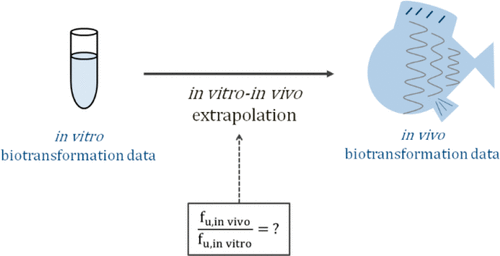当前位置:
X-MOL 学术
›
Chem. Res. Toxicol.
›
论文详情
Our official English website, www.x-mol.net, welcomes your feedback! (Note: you will need to create a separate account there.)
Prediction of Unbound Fractions for in Vitro–in Vivo Extrapolation of Biotransformation Data
Chemical Research in Toxicology ( IF 4.1 ) Pub Date : 2021-01-08 , DOI: 10.1021/acs.chemrestox.0c00349 Sophia Krause 1 , Kai-Uwe Goss 1, 2
Chemical Research in Toxicology ( IF 4.1 ) Pub Date : 2021-01-08 , DOI: 10.1021/acs.chemrestox.0c00349 Sophia Krause 1 , Kai-Uwe Goss 1, 2
Affiliation

|
For in vitro–in vivo extrapolation of biotransformation data, the different sorptive environments in vitro and in vivo need to be considered. The most common approach for doing so is using the ratio of unbound fractions in vitro and in vivo. In the literature, several algorithms for prediction of these unbound fractions are available. In this study, we present a theoretical evaluation of the most commonly used algorithms for prediction of unbound fractions in S9 assays and blood and compare prediction results with empirical values from the literature. The results of this analysis prove a good performance of “composition-based” algorithms, i.e. algorithms that represent the inhomogeneous composition of in vitro assay and in vivo system and describe sorption to the individual components (lipids, proteins, water) in the same way. For strongly sorbing chemicals, these algorithms yield constant values for the ratio of unbound fractions in vitro and in vivo. This is mechanistically plausible, because in these cases, the chemicals are mostly bound, and the ratio of unbound fractions is determined by the volume ratio of sorbing components in both phases.
中文翻译:

生物转化数据体外-体内外推法中未结合分数的预测
对于生物转化数据的体外-体内外推,需要考虑体外和体内不同的吸附环境。这样做的最常见方法是使用体外和体内未结合部分的比率. 在文献中,可以使用几种算法来预测这些未结合的分数。在本研究中,我们对最常用的 S9 检测和血液中未结合组分预测算法进行了理论评估,并将预测结果与文献中的经验值进行了比较。该分析的结果证明了“基于成分”算法的良好性能,即表示体外测定和体内系统的不均匀成分并以相同方式描述对单个成分(脂质、蛋白质、水)的吸附的算法. 对于强吸附化学品,这些算法在体外和体内产生未结合部分比率的恒定值. 这在机械上是合理的,因为在这些情况下,化学物质大部分是结合的,未结合部分的比例由两相中吸附组分的体积比决定。
更新日期:2021-01-18
中文翻译:

生物转化数据体外-体内外推法中未结合分数的预测
对于生物转化数据的体外-体内外推,需要考虑体外和体内不同的吸附环境。这样做的最常见方法是使用体外和体内未结合部分的比率. 在文献中,可以使用几种算法来预测这些未结合的分数。在本研究中,我们对最常用的 S9 检测和血液中未结合组分预测算法进行了理论评估,并将预测结果与文献中的经验值进行了比较。该分析的结果证明了“基于成分”算法的良好性能,即表示体外测定和体内系统的不均匀成分并以相同方式描述对单个成分(脂质、蛋白质、水)的吸附的算法. 对于强吸附化学品,这些算法在体外和体内产生未结合部分比率的恒定值. 这在机械上是合理的,因为在这些情况下,化学物质大部分是结合的,未结合部分的比例由两相中吸附组分的体积比决定。



























 京公网安备 11010802027423号
京公网安备 11010802027423号